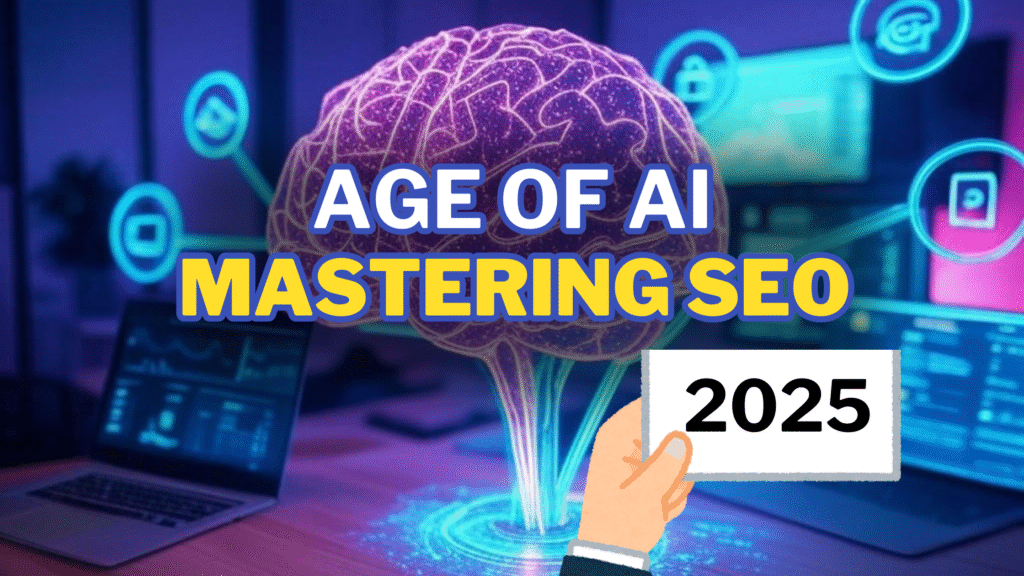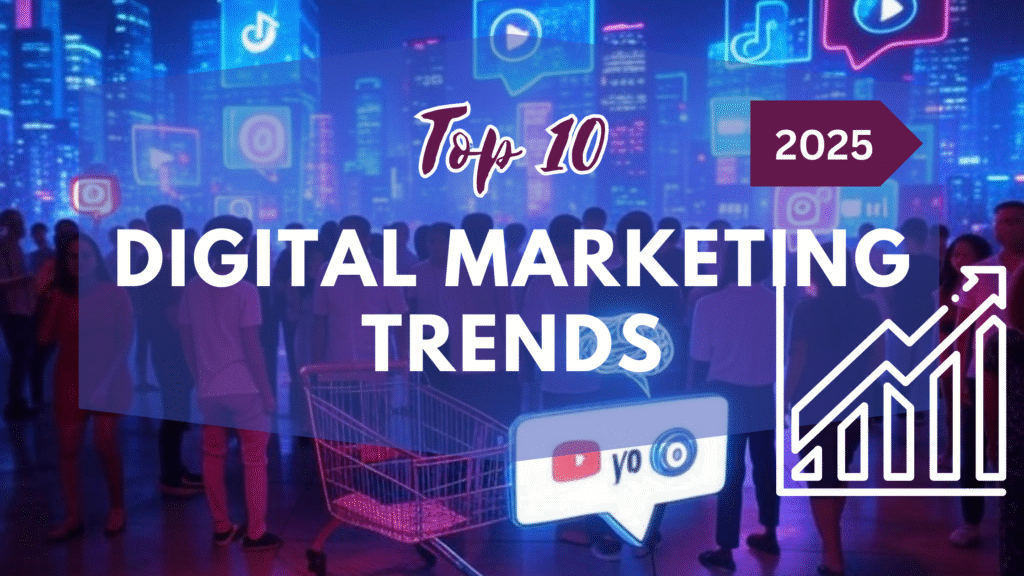Introduction
In 2025, search engine optimization (SEO) is navigating a transformative era driven by artificial intelligence (AI), particularly Google’s AI Overviews. These AI-generated summaries, appearing at the top of search results, provide users with instant answers, often reducing the need to click through to websites. Launched in May 2024, AI Overviews now appear in nearly 20% of searches, with higher prevalence in industries like business and technology (WordStream). While this shift challenges traditional SEO, it also presents opportunities for marketers to optimize content for visibility in these summaries or to attract users seeking deeper insights. This comprehensive guide offers actionable tips to master SEO in the age of AI Overviews, leveraging high-searched keywords like “SEO,” “AI Overviews,” “user intent,” and “schema markup” to ensure your content remains competitive in 2025.
Understanding AI Overviews
AI Overviews, previously known as Search Generative Experience (SGE), are Google’s response to the rise of conversational AI and the demand for intuitive search experiences. These overviews compile information from multiple web sources into a concise, AI-generated summary displayed prominently at the top of search engine results pages (SERPs). Designed to answer queries directly, they cater to users seeking quick solutions without navigating to individual websites, effectively transforming search engines into answer engines (Search Engine Land).
By November 2024, AI Overviews were present in approximately 20% of searches, up from 7% in June 2023, with some informational-heavy sectors seeing over 33% prevalence (WordStream). This growth underscores the urgency for SEO professionals to adapt strategies to ensure content is either featured in these summaries or compelling enough to drive clicks beyond them.
The Impact of AI Overviews on SEO
AI Overviews have introduced a significant shift in user behavior, contributing to the rise of zero-click searches, where users find answers directly on the SERP without visiting external sites. A study by Ahrefs found that the presence of an AI Overview correlates with a 34.5% lower average click-through rate (CTR) for the top-ranking page compared to similar queries without an overview (SelfMadeMillennials). This reduction in CTR poses a challenge for websites reliant on organic traffic, particularly for informational content.
However, organic traffic continues to grow overall, indicating that SEO remains a critical marketing channel (WordStream). The key is to shift focus from solely driving clicks to ensuring content is valuable enough to be featured in AI Overviews or to provide in-depth information that encourages users to explore further. Additionally, the rise of alternative search platforms, such as social media and AI-driven answer engines like Perplexity, adds complexity, requiring a diversified approach to content distribution.
Strategies for Mastering SEO in 2025
To thrive in the age of AI Overviews, marketers must adapt their SEO strategies to align with AI-driven search dynamics. Below are seven actionable tips to optimize content for visibility and engagement in 2025:
1. Create Structured, Quotable Content
AI Overviews extract key information from web sources to generate summaries, making content structure critical. Organize your content with clear headings, subheadings, bullet points, and numbered lists to facilitate AI parsing. Concise, quotable paragraphs that directly answer user queries increase the likelihood of being featured in an overview.
For example, a blog post on “Best Laptops for Students” could include a section titled “Top Recommendations” with bullet points listing specific models, their features, and prices. This structure not only aids AI but also enhances user readability (GrowthMachine).
Actionable Step: Audit existing content to ensure it uses clear headings and lists. Tools like Yoast SEO can help assess readability and structure.
2. Implement Schema Markup
Schema markup, or structured data, provides search engines with context about your content, increasing the chances of appearing in AI Overviews or rich snippets. For instance, using product schema for an ecommerce site can highlight prices, reviews, and availability, making it easier for AI to extract relevant details.
Google’s Structured Data Markup Helper (Google Structured Data) simplifies the process of adding schema to your site. Schema types like “Article,” “FAQ,” or “HowTo” are particularly effective for informational content (SEOcrawl).
Actionable Step: Add schema markup to key pages using Schema.org guidelines and test with Google’s Rich Results Test.
3. Prioritize User Intent
With AI Overviews answering basic queries, your content must offer additional value to encourage clicks. Focus on understanding user intent—whether informational, navigational, or transactional—and create in-depth content that addresses related questions and provides unique insights.
For example, if a user searches “how to start a blog,” an AI Overview might summarize the steps. Your content can stand out with a detailed guide covering platform comparisons, monetization strategies, and case studies (Exploding Topics).
Actionable Step: Use AnswerThePublic to identify related questions and incorporate them into your content.
4. Optimize for Featured Snippets
AI Overviews often draw from featured snippets, making snippet optimization a priority. Write concise, direct answers to common questions in a format that search engines can easily extract, such as a single paragraph or a bulleted list. Position these answers early in your content, ideally within the first 100 words.
For instance, answering “What is the best time to post on Instagram?” with a clear paragraph like “The best time to post on Instagram is between 7-9 AM and 5-7 PM, based on user engagement data” can increase snippet visibility (Conductor).
Actionable Step: Analyze “People Also Ask” sections in Google search results to target snippet opportunities.
5. Leverage AI Tools for Efficiency
AI tools are transforming SEO by automating tasks like keyword research, content optimization, and performance analysis. Tools like Surfer SEO analyze search intent and competitor content to suggest optimizations, while AI writing assistants like Jasper generate drafts that can be refined for quality.
However, human oversight is crucial to ensure content aligns with brand voice and avoids generic outputs (Salesforce). Approximately 58% of SEO professionals plan to integrate AI tools within the next year (SeoProfy).
Actionable Step: Experiment with Surfer SEO for content optimization and review AI-generated drafts for authenticity.
6. Diversify Content Formats
AI Overviews and evolving search behaviors favor diverse content formats, particularly video. Search engines increasingly feature video results, making platforms like YouTube critical for SEO. Create video tutorials, product demos, or expert interviews to capture visibility in both traditional and AI-driven search results.
Infographics, podcasts, and interactive content also engage users and provide alternative ways to deliver value (Conductor).
Actionable Step: Produce short-form videos (under 2 minutes) for YouTube and optimize with descriptive titles and tags.
7. Monitor and Adapt to Changes
SEO in 2025 requires agility due to frequent algorithm updates and evolving AI features. Use tools like Google Analytics and Google Search Console to track performance metrics, such as organic traffic, CTR, and snippet appearances. Stay informed about Google’s core updates, which prioritize user-friendly websites (GrowthMachine).
Actionable Step: Set up monthly performance reviews to identify underperforming pages and optimize them based on Search Console data.
Comparing Traditional SEO and SEO for AI Overviews
The following table highlights key differences between traditional SEO and strategies tailored for AI Overviews:
Aspect | Traditional SEO | SEO for AI Overviews |
|---|---|---|
Content Focus | Keyword optimization, long-tail keywords | Structured, quotable content, user intent |
Optimization | Meta tags, backlinks | Schema markup, clear headings, bullet points |
Traffic Goal | Drive clicks to website | Be featured in AI Overviews or provide value beyond the overview |
Tools | Keyword research tools, analytics | AI writing assistants, schema markup generators |
Case Studies
Neil Patel Digital’s Traffic Test: A study of 30,000 websites showed organic traffic increased despite AI Overviews, highlighting the resilience of SEO with adapted strategies (WordStream).
Recipe Blog Success: A food blog optimized for recipe schema and concise answers saw increased visibility in AI Overviews, maintaining traffic for detailed guides (GrowthMachine).
Challenges and Considerations
Adapting to AI Overviews presents challenges:
Reduced CTR: Zero-click searches may decrease traffic, requiring a focus on conversion quality over volume.
AI Tool Integration: Implementing AI tools can be costly and requires training to ensure effective use.
Algorithm Volatility: Frequent updates, like the August 2024 core update, demand ongoing optimization (SelfMadeMillennials).
To address these, prioritize high-impact strategies like schema markup and user intent, and start with cost-effective AI tools before scaling up.
Conclusion
Mastering SEO in the age of AI Overviews requires a strategic shift toward structured, user-focused content that aligns with AI-driven search dynamics. By implementing schema markup, optimizing for featured snippets, leveraging AI tools, and diversifying content formats, marketers can maintain visibility and drive meaningful engagement in 2025. Regular monitoring and adaptation to algorithm changes will ensure long-term success. Embrace these strategies to not only survive but thrive in the evolving world of SEO.
Further Reading
The 8 SEO Trends That Will Shape Search in 2025 | WordStream
Future of SEO: 5 Key SEO Trends (2025 & 2026) | Exploding Topics
SEO priorities for 2025: Your guide to search success | Search Engine Land
AI SEO Trends 2025: Key Takeaways for Content Creators | SelfMadeMillennials
60 AI SEO Statistics for 2025 | SeoProfy
SEO Trends 2025: Thriving in the Age of AI and Algorithms | GrowthMachine
AI Search in 2025: SEO / GEO for LLMs and AI Overviews | Lumar
2025 AI Search Trends: The Future of SEO & Content Marketing | Conductor
AI for SEO: Your Guide for 2025 | Salesforce
2025 SEO Trends | The Top 8 Key Insights | SEOcrawl


